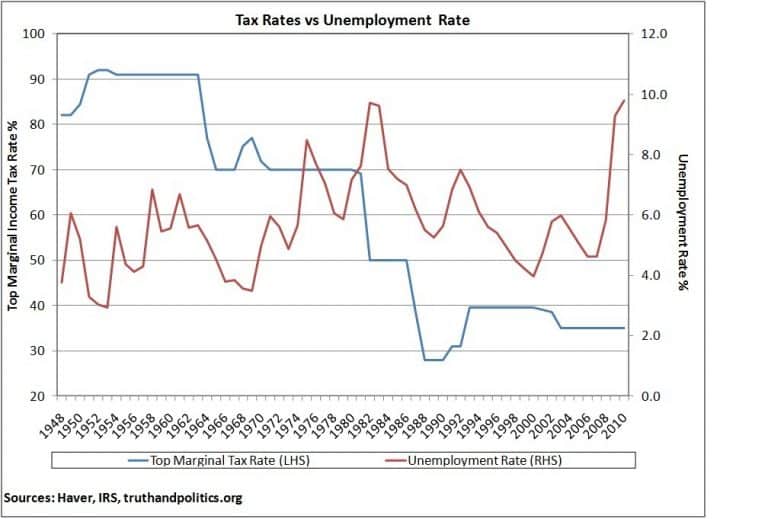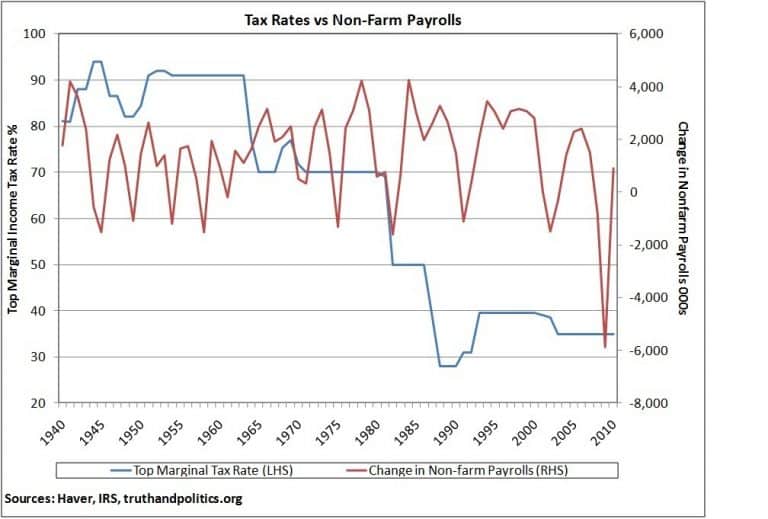Jobs and Taxes
For months, Ben Bernanke has been more or less pleading with fiscal policymakers to catch up to him. In his August 27 Jackson Hole speech, he said, “[A] return to strong and stable economic growth will require appropriate and effective responses from economic policymakers across a wide spectrum, as well as from leaders in the private sector. Central bankers alone cannot solve the world’s economic problems.” In his November 4 op-ed in the Washington Post, he said, “The Federal Reserve cannot solve all the economy’s problems on its own. That will take time and the combined efforts of many parties, including the central bank, Congress, the administration, regulators and the private sector.” In his speech in Frankfurt on November 19, he said, “The Federal Reserve is nonpartisan and does not make recommendations regarding specific tax and spending programs. However, in general terms, a fiscal program that combines near-term measures to enhance growth with strong, confidence-inducing steps to reduce longer-term structural deficits would be an important complement to the policies of the Federal Reserve.” And in his "60 Minutes" interview on December 5, he said it again: “We need to pay close attention to the fact that we are recovering now. We don’t want to take actions this year that will affect this year’s spending and this year’s taxes in a way that will hurt the recovery. That’s important.”
With yesterday’s announced agreement on tax cuts and the extension of unemployment benefits, Congress and the Administration are making the first tentative steps in that direction. It is unclear at this point what the impact might be to tax receipts, the deficit and the debt load, but estimates run as high as $800 billion for the package of maintaining the Bush-era tax regime, extending unemployment benefits, offering workers a 2% payroll tax holiday, a one-year increase to a 100% accelerated depreciation benefit for corporations and lowering the estate tax. One thing that is clear, however, as President Obama said repeatedly in his statement, is that the desired effect is to boost jobs (emphasis added):
· “Allowing taxes to go up on all Americans would have raised taxes by $3,000 for a typical American family. And that could cost our economy well over a million jobs.”
· “This agreement would also mean a 2 percent employee payroll tax cut for workers next year — a tax cut that economists across the political spectrum agree is one of the most powerful things we can do to create jobs and boost economic growth.”
· “We will provide incentives for businesses to invest and create jobs by allowing them to completely write off their investments next year.”
· “As for now, I believe this bipartisan plan is the right thing to do. It’s the right thing to do for jobs.”
· “It’s not perfect, but this compromise… will spur our private sector to create millions of new jobs, and add momentum that our economy badly needs.”
· “And my singular focus over the next year is going to be on how do we continue the momentum of the recovery, how do we make sure that we grow this economy and we create more jobs.”
The transmission of tax cuts to job creation may or may not work. As the graphs below show, there is no visible correlation between tax policy and the unemployment rate and job creation.
We understand that these graphs are simplistic to a fault, but we want to make the point that in fiscal and monetary policy it is all about transmission mechanisms. The idea behind tax strategy is not exactly to create or protect jobs, but to increase aggregate demand, i.e., GDP growth, which is what would cause employers to start hiring again. In the case of this tax compromise, the only aspects of it that seem likely to increase aggregate demand are the reduction in the employee side of the payroll tax and the accelerated depreciation benefit. The biggest slug of it, maintaining the current income tax rates, doesn’t increase aggregate demand at all, it merely avoids decreasing it. Stay tuned.


Comments are closed.